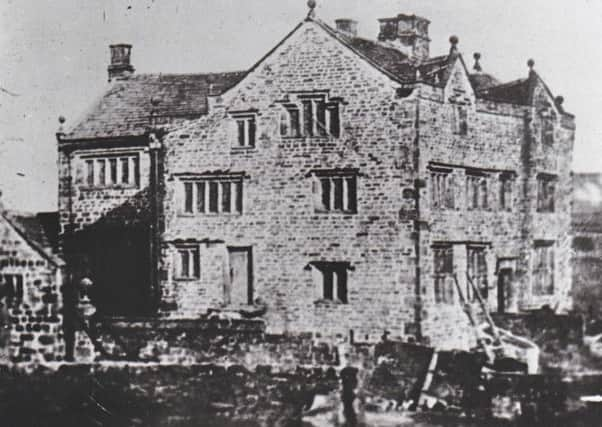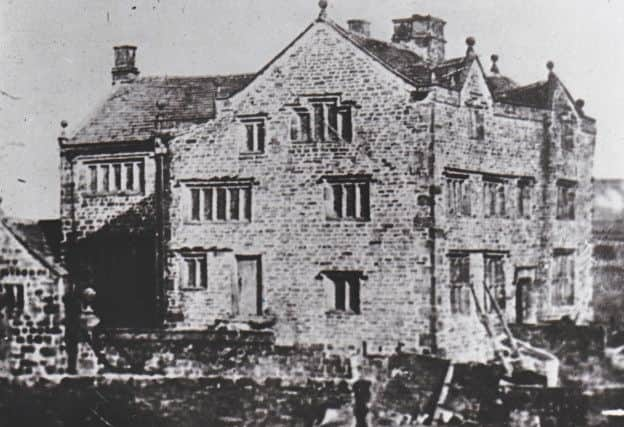What we can learn from historic Extwistle Hall


We know the Manor House was in a ruinous state in the 1520s by which time its functions had been transferred elsewhere – to St Peter’s Church, Burnley, and Higham – but it is also known Sir John Towneley, the lessee of the Manor in the early 16th Century, did undertake some repairs. However, it did not last and subsequently the building was lost.
The stones out of which it was built were incorporated into other structures in Ightenhill. These include some of the field walls and, according to Walter Bennett, parts of the existing “Manor House” were constructed out of material from the ancient building. I have not spent much time investigating either of these claims but it might be worth undertaking.
Advertisement
Hide AdAdvertisement
Hide AdIt has been pointed out to me that, as Extwistle Hall was a Manor House, much might be learned about the manorial system from a study of this building which, though in a poor state of repair, is still with us.


If you recall my articles on the Manor House at Ightenhill, I indicated there are at least two types of Manor House. The one at Ightenhill, the de facto Manor House for Burnley, was built, possibly in the later 12th Century, to be the centre of Manorial activity for its Manor. It was a Manor House first and a place to live, second.
I suspect there were apartments designed as living spaces – perhaps a solar for example – at Ightenhill. A solar was a sleeping and living space for the Lord of the Manor and his family and, as Edward II stayed at the Manor House for a few days in 1323, it is likely there was such accommodation. We also know Henry Earl of Lincoln, Lord of the Manor in the late 13th and early 14th Centuries, was very interested in his Manor of Ightenhill. It is likely he, too, would have stayed there.
Similarly, there was probably a resident Greave at Ightenhill and it could be that he, together with his family, lived in the Manor House. On the other hand, some documents seem to indicate the Greave lived in another property on the site or at nearby Royle.
Advertisement
Hide AdAdvertisement
Hide AdAt Extwistle the building is not medieval though it has medieval connections. It is thought Extwistle Hall dates to about 1585 by which time the Manorial System, though elements of it survived into the late 19th Century, was, to use a modern phrase, “well past its sell-by date”. Extwistle Hall was, first and foremost, designed as a place in which to live. The family who lived there might have regarded it as a Manor House, with Manorial functions, but its primary object, when built, was to provide a home.
There is, though, a connection between Ightenhill and Extwistle. The family who built Extwistle Hall was called Parker, their name derived from the fact they were the hereditary “park-keepers” of Ightenhill. The family first acquired Monk Hall estate, on Extwistle Moor, after the Abbot of Kirkstall effectively sold it to the Earl of Lincoln. Then the Parkers acquired the property of Newbo Abbey, essentially contiguous to Extwistle Hill, the western part of the Township otherwise known as Lower Extwistle.
The Parkers first acquisition was in the Middle Ages but that of Lower Extwistle took place after the Dissolution of the Monasteries in the 16th Century. It is clear the Parker family moved their house to Extwistle Hall which was newly built by them at a time of considerable prosperity in the wool industry.
As a consequence of writing articles about Ightenhill, and its Manor House, I have come to think again about the role of the Parkers when they were “park-keepers” there. The role was essentially the management of the privately owned deer park which was part of the Lord’s Demesne but I feel this might have to be re-evaluated as we know a large part of the Demesne (the Lord’s private land) was given over, not to deer, but the rearing of horses.
Advertisement
Hide AdAdvertisement
Hide AdHow these two fit together is the question and, added to that, is, did the Parkers, when at Ightenhill, have a more significant Manorial role than might otherwise have been the case? If they did, could it be that, when they acquired their properties in Extwistle, they decided to manage them in the way to which they had become accustomed at Ightenhill?
If the “Manor of Extwistle” was not let out according to the Custom of the Manor of Ightenhill, and there is no proof it was, it could be the title of the Parker property at Extwistle, which was known as the “Manor of Extwistle”, was indeed a fiction. On the other hand, it is known that, though they were first mentioned in the middle of the 16th Century, there were Bye Laws which related to how Extwistle land was to be managed. We also have a copy of a Manorial document, whereby Robert Townley Parker, claiming to be Lord of the Manor of Extwistle, required James Smith of Briercliffe to attend a Court at “Extwistle all” (Hall) on July 18th, 1833.
To conclude, it is clear the Manor Houses of Ightenhill and Extwistle were different. The former was much older and constructed when the Manorial System of administration was at its zenith. Extwistle Hall was built 400 years later when the concept of the Manor was rather different. In later years it became fashionable to name your house (Something) Manor. Such a name added a little, whether the building had a Manorial role or not.
Extwistle Hall might not have been in the latter category but it was certainly not in the first. It appears the Parkers’ Extwistle Estate was run, at least in part, on manorial lines and when the Local Government Act of 1894 was introduced the disappearance of “Ancient Manor of Extwistle” was lamented by the local press.
Advertisement
Hide AdAdvertisement
Hide AdThese days what concerns us is the gradual, but relentless, disappearance of the house. It would be a great pity if Extwistle Hall crumbled away like the ancient Manor House at Ightenhill before it, but it seems the logical conclusion of what is happening is the current owners will continue to allow the building to decay.